
Creating a trompe l'oeil layout extension
A model railway layout is very the stage in a theatre. There is a front of stage area, where the illusion of a real piece of railway is created, and then there are areas 'back stage' such as fiddle and storage areas, or as the Americans say, staging.
And then the actors - the trains in our case - leave the back stage area, strut their stuff, and then return to whence they came.
There are various techniques for making the viewable area seem larger than it is, and a common one is to place a mirror at right angles to the track under a bridge so it appears that the track carries on beyond the edge of the baseboard.
As you do, Iooking for a new photo angle, I found myself squinting along the track watching an approaching train enter the tunnel forming the exit from the storage tracks and then work its way through the scenic area until it passed my viewpoint.
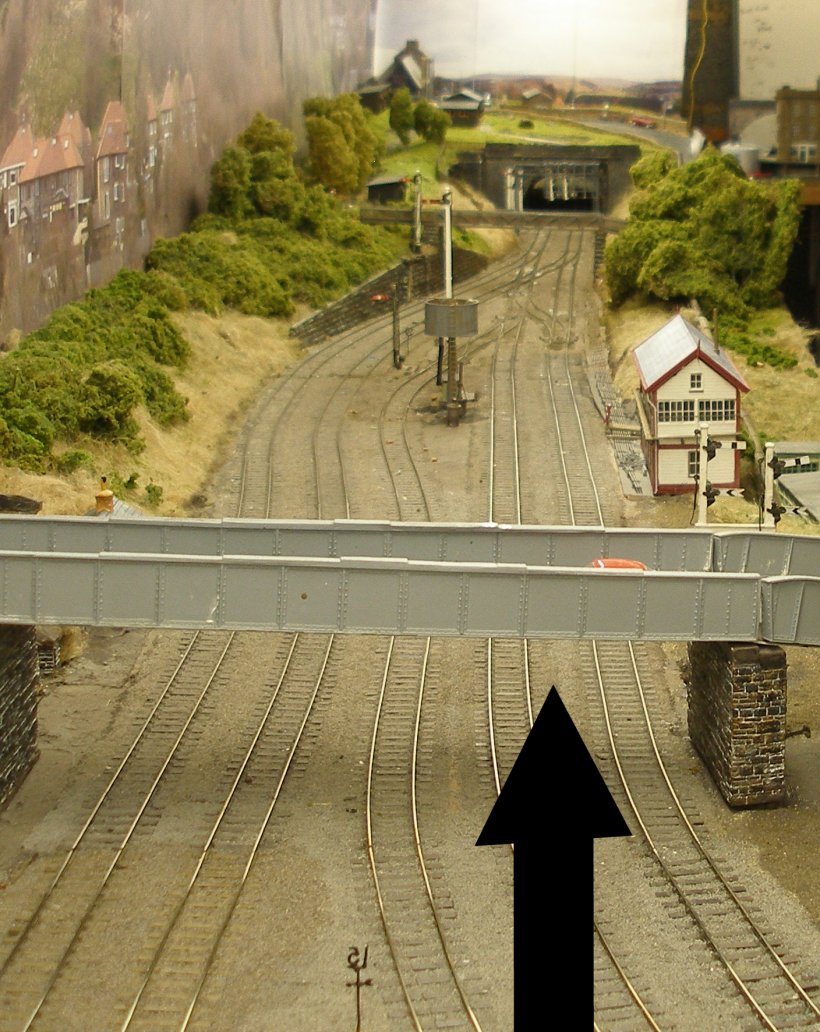
It struck me that I could see clearly through the far-distant tunnel and see very clearly the brick wall forming the gable-end of my loft. This rather spoilt the illusion of a freight train laboriously working its way up the Calder Valley towards Lancashire.
In real life, the railway exit Hall Royd Junction through the 223 yard Millwood Tunnel, and then enters the cutting that is the prequel for Castlehill Tunnel. In theory, one should be able to see part of this cutting and the Castlehill Tunnel mouth from the Hall Royd side of Millwood Tunnel.
Obviously, what was required was a colour photo taken at track level of the Castlehill Tunnel mouth. Driving over to Todmorden and standing in the middle of the track to take a photo was not going to work.
But, to hand, was the 225 Studios 'Manchester Victoria - Leeds -York' video shot from the cab window of a Pacer. It was a simple matter to run the video until the tunnel mouth appeared, and then take a screen crab. This is not the crispest of images, but for my purposes, was perfect.
The Auto-focus on the camera rather spoils the effect by focusing on the foreground, but the following track level shots show how the illusion looks when viewed looking out of the scenic area.
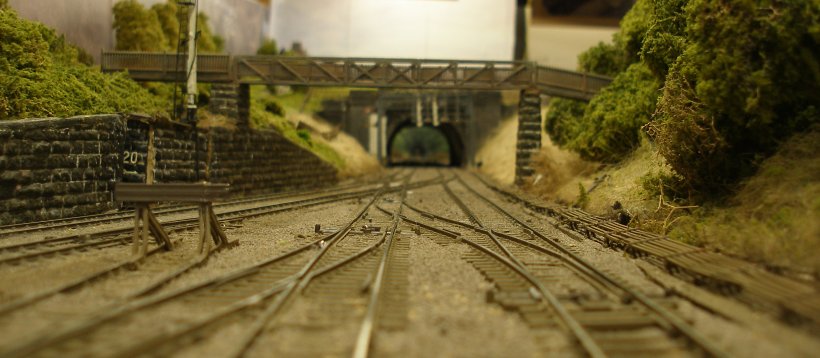
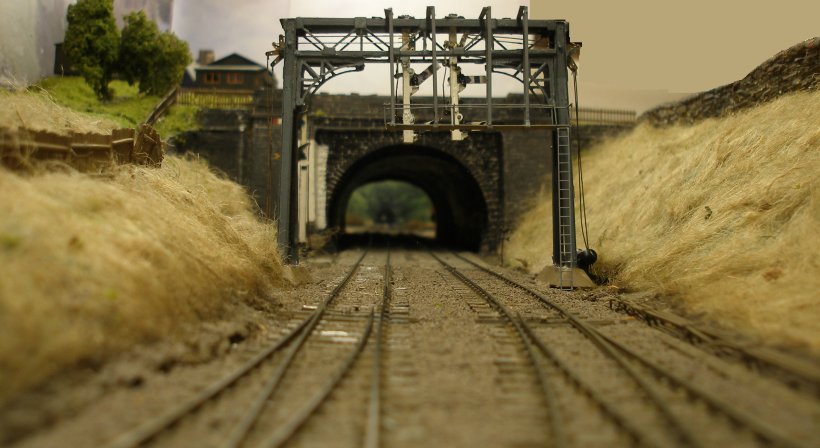
The interior of the tunnel was never meant be seen like this! It is obvious that Stephenson ran out of bricks halfway. More importantly, between end of the tunnel's brick lining and the crudely cut portal in the plywood fascia is an lift-out access panel above.But crucially, the illusion that the tracks continue straight on and through Castlehill Tunnel is created.
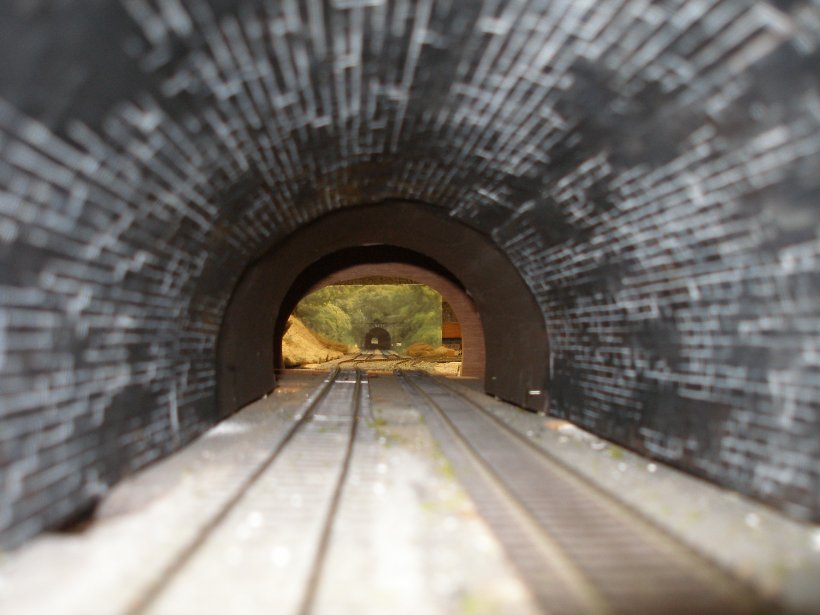
And finally, this is what it looks like when the curtain is pulled back and the eastbound Calder Valley Main Line revealed for what it is!
Before anyone thinks I have wasted a load of good track to create this, the faux Calder Valley track leading into Castlehill Tunnel is old steel-railed C&L track recovered from a previous layout and which could not really be used again as it is prone to surface rusting. Also, it had been bent in the vertical plane, possibly having been stood on, and so this the perfect deployment for it.
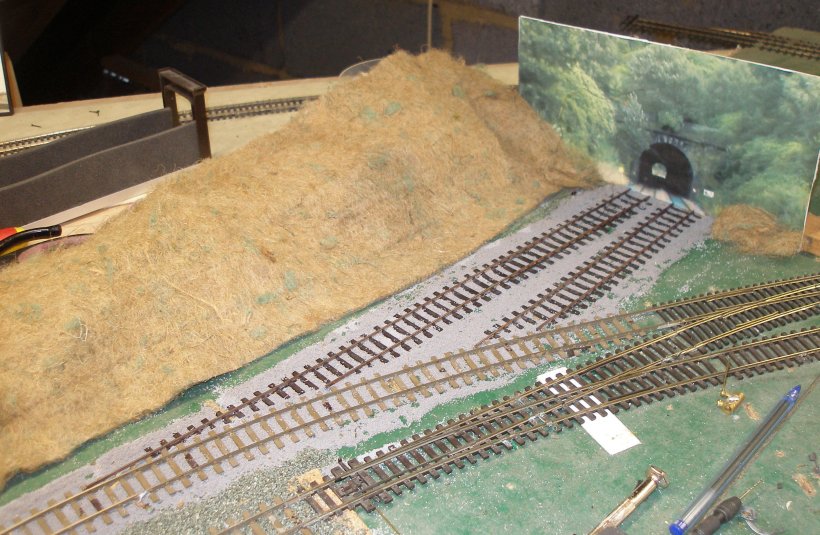
27 August 2022
